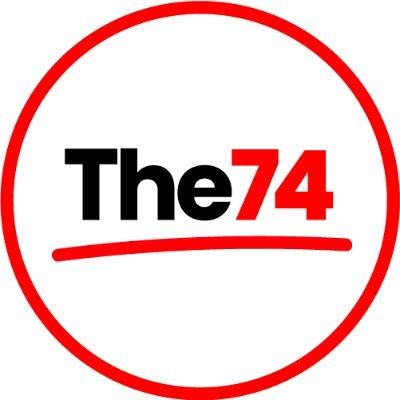Report on the UNGA High-Level Meeting: Advancing SDG 5 through the Beijing+30 Agenda
Introduction and Alignment with Sustainable Development Goals (SDGs)
At the commencement of the UNGA80 High-Level Week, global leaders convened for the High-level Meeting of the General Assembly on the Thirtieth Anniversary of the Fourth World Conference on Women. The meeting served to commemorate the Beijing Declaration and Platform for Action, reaffirming its role as a foundational framework for achieving gender equality. This event underscored the centrality of Sustainable Development Goal 5 (Gender Equality) to the entire 2030 Agenda for Sustainable Development, positioning the rights of women and girls as a unifying force for global progress.
Key Outcomes and Commitments to the 2030 Agenda
The meeting transitioned from rhetoric to tangible commitments, marking a significant multilateral advancement for gender equality and the SDGs. Key outcomes include:
- Mobilization of National Actions: In a direct contribution to the implementation of SDG 5 and SDG 17 (Partnerships for the Goals), 109 national governments committed to 212 specific national actions. These actions form the basis of the Beijing+30 Action Agenda, representing the most robust multilateral initiative for women and girls in three decades.
- Reinforcement of Gender Equality as a Global Imperative: Leaders, including UN Secretary-General Antonio Guterres, reiterated that equal rights and opportunities are prerequisites for achieving SDG 16 (Peace, Justice and Strong Institutions) and overall global peace and prosperity.
- Institutional Strengthening for SDG 5: The event followed the consensus adoption of a resolution to revitalize the Commission on the Status of Women (CSW). This measure strengthens the institutional framework dedicated to the promotion of gender equality and the empowerment of women, which is critical for monitoring and accelerating progress on SDG 5.
High-Level Participation and Advocacy
The event demonstrated widespread political will, with significant representation from member states and global institutions. Participation highlights include:
- A total of 155 speakers addressed the assembly.
- Attendees included 15 Heads of State and 10 Heads of Government.
- Notably, 8 of the attending Heads of State and Government were women, representing Suriname, Switzerland, Namibia, Peru, Slovenia, Marshall Islands, North Macedonia, and Barbados, underscoring progress toward SDG Target 5.5 (ensure women’s full and effective participation and equal opportunities for leadership).
- 77 Ministers and high-level representatives, including Her Majesty Queen Rania Al Abdullah of Jordan and Her Majesty Queen Mathilde of the Belgians, also delivered addresses.
Statements from Key Stakeholders on SDG Implementation
Keynote addresses focused on the need for concrete action to translate the principles of the Beijing Declaration and the targets of SDG 5 into reality.
- UN Women Executive Director Sima Bahous called for commitments to be matched with tangible resources, stating, “Your words today must be matched by courage tomorrow: in the policies you pass, the budgets you allocate, and the change you drive.” This highlights the need for dedicated financing and policy coherence to achieve the SDGs.
- President of the General Assembly H.E. Annalena Baerbock acknowledged the legacy of the Beijing Declaration but emphasized that “30 years later the revolution remains unfinished,” signaling the urgency required to overcome persistent barriers to gender equality.
- UN Secretary-General Antonio Guterres framed gender equality as a non-partisan, global imperative, urging all leaders to “do everything possible to realize the vision of the Beijing Declaration,” thereby accelerating the entire 2030 Agenda.
Analysis of Sustainable Development Goals in the Article
1. Which SDGs are addressed or connected to the issues highlighted in the article?
-
SDG 5: Gender Equality
- The entire article is centered on the theme of gender equality. It discusses the High-level Meeting of the General Assembly on the Thirtieth Anniversary of the Fourth World Conference on Women, which celebrated the Beijing Declaration as a “groundbreaking global agenda for gender equality.” The text repeatedly emphasizes the need to uphold “women and girls’ rights” and achieve “equal rights and opportunities for women and girls.”
-
SDG 16: Peace, Justice and Strong Institutions
- The article connects gender equality to broader societal goals. The UN Secretary-General is quoted as saying, “Equal rights and opportunities for women and girls are… the foundation of peace, prosperity and progress.” This links gender equality directly to the aims of SDG 16. Furthermore, the mention of the “resolution to revitalize the Commission on the Status of Women” points to the strengthening of institutions dedicated to these goals.
-
SDG 17: Partnerships for the Goals
- The event described is a clear example of a global partnership. It brought together “leaders from around the world,” including “15 Heads of State and 10 Heads of Government,” to mobilize action. The article highlights that “109 national governments mobilizing 212 national actions” represents the “strongest multilateral stand for women and girls in the past 30 years,” which is the essence of SDG 17.
2. What specific targets under those SDGs can be identified based on the article’s content?
-
Under SDG 5 (Gender Equality):
- Target 5.1: End all forms of discrimination against all women and girls everywhere. The article’s core message is about achieving “equal rights and opportunities for women and girls,” which is fundamental to ending discrimination. The celebration of the Beijing Declaration is a reaffirmation of this commitment.
- Target 5.5: Ensure women’s full and effective participation and equal opportunities for leadership at all levels of decision-making in political, economic and public life. The article highlights the presence of women in leadership roles, noting that among the speakers were “8 of them women – Suriname, Switzerland, Namibia, Peru, Slovenia, Marshall Islands, North Macedonia and Barbados” and that the event was a major initiative of “the 5th woman President of the General Assembly out of 80.”
- Target 5.c: Adopt and strengthen sound policies and enforceable legislation for the promotion of gender equality and the empowerment of all women and girls at all levels. The call for leaders’ words to be “matched by courage tomorrow: in the policies you pass, the budgets you allocate” directly relates to this target. The commitment from “109 national governments mobilizing 212 national actions” is a concrete step towards implementing such policies.
-
Under SDG 16 (Peace, Justice and Strong Institutions):
- Target 16.b: Promote and enforce non-discriminatory laws and policies for sustainable development. The UN Secretary-General’s statement that leaders should do “everything possible to realize the vision of the Beijing Declaration” supports the enforcement of non-discriminatory policies for gender equality as a foundation for overall progress.
-
Under SDG 17 (Partnerships for the Goals):
- Target 17.16: Enhance the global partnership for sustainable development, complemented by multi-stakeholder partnerships that mobilize and share knowledge, expertise, technology and financial resources. The high-level meeting itself, gathering leaders from around the world to make commitments, is a direct manifestation of this global partnership in action.
3. Are there any indicators mentioned or implied in the article that can be used to measure progress towards the identified targets?
-
For SDG 5 (Gender Equality):
- Indicator 5.5.1: Proportion of seats held by women in national parliaments and local governments. While not providing parliamentary proportions, the article explicitly mentions high-level political representation as a measure of progress. It states there were “15 Heads of State and 10 Heads of Government, 8 of them women” and highlights “the 5th woman President of the General Assembly out of 80.” These figures serve as indicators of women’s leadership in public life.
- Indicator 5.c.1: Proportion of countries with systems to track and make public allocations for gender equality and women’s empowerment. This is implied in the call for leaders to match their words with “the budgets you allocate.” Tracking these budget allocations would be the primary way to measure this commitment.
-
For SDG 17 (Partnerships for the Goals):
- The article provides quantitative data that can serve as indicators of the strength of the global partnership. These include:
- The number of governments making commitments: “109 national governments.”
- The number of actions mobilized: “212 national actions.”
- The number and level of participants at the event: “155 speakers, of whom there were 15 Heads of State and 10 Heads of Government.”
- The article provides quantitative data that can serve as indicators of the strength of the global partnership. These include:
4. Summary Table of SDGs, Targets, and Indicators
| SDGs | Targets | Indicators |
|---|---|---|
| SDG 5: Gender Equality |
|
|
| SDG 16: Peace, Justice and Strong Institutions |
|
|
| SDG 17: Partnerships for the Goals |
|
|
Source: unwomen.org







